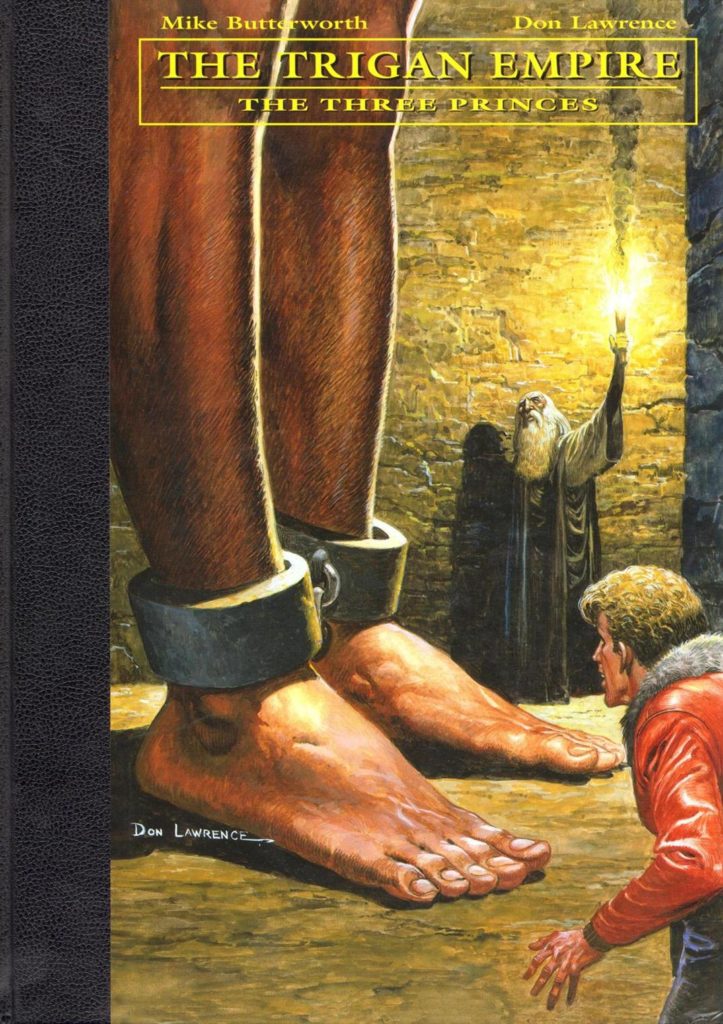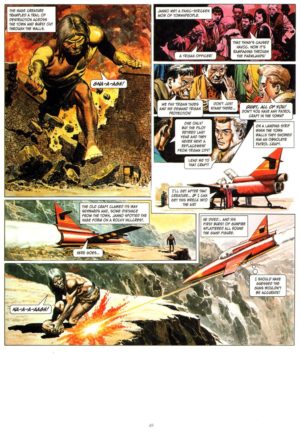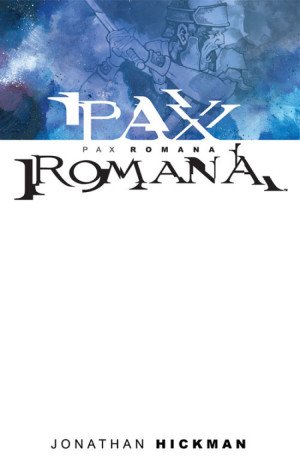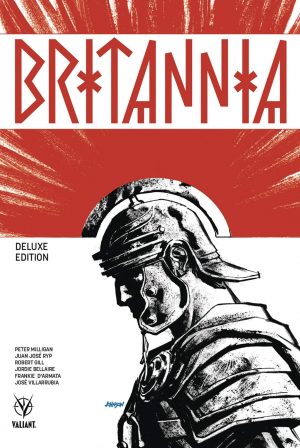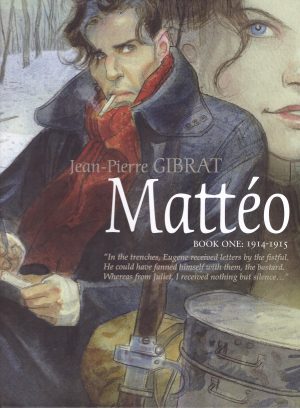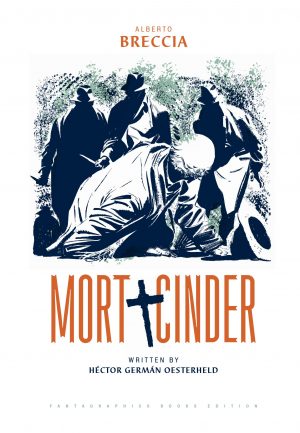Review by Frank Plowright
A device Mike Butterworth regularly resorts to in The Trigan Empire is the plot that takes an inordinate amount of time to come to fruition, which is the case with the title strip, which is the longest of the series, running to sixty pages in total.
By today’s standards the opening is strange, then shocking. Unseen in the story, or indeed ever again in the strip, Emperor Trigo’s wife Uesa gives birth to triplets, but to prevent later jealousies and possible fights, only one heir is required, so two must be disposed of. Salvia is tasked with disposing of them. As she does so a telepathic alien arrives on Elekton. Calling himself Thriga, several years later he’s appointed as teacher to the troublesome Prince Argo, and spends several more years in that position. The bulk of the story occurs with Argo in his mid-teens at least. It’s episodic with distinct phases, and as the introduction points out, much is filched straight from film or novel The Dangerous Game, but it’s also exciting and has Don Lawrence on top form as he adapts to the various sequences. The most startling is the use of a giant whose fingers are the size of humans, but it also features a monster from the deep, some thrilling aerial combat, scenes at sea and on a mountain and knights of old as well. Butterworth loved mixing and matching his historical eras for the series, and this sequence is all over the place.
Every now and then Butterworth also resorted to the substance that somehow altered a person’s behaviour, which he here mixes with a further recurring standby, that of something alien arriving on Elekton. It’s a plot that connects with the previous revelation of the three princes, and instead of solving the problem, Butterworth just chooses to ignore it, and from The Red Death one character is just never seen again. The basic plot for ‘The Alien Dust’ may be stitched together from portions of earlier stories, but Butterworth varies the setting, and as is pointed out in the introduction, there’s a good use of the lesson from history that the superior force isn’t always victorious. Lawrence delivers some fine scenes of desert warfare, but the lack of originality scuppers his best efforts.
Although listed online as volume five, it’s the fourth collection chronologically, the original publication of these strips continuing from The Reign of Thara. ‘The Three Princes’ also features in the Hawk Books collection Tales from the Trigan Empire, but don’t be tempted by the cheap alternative. Pages are cut from the beginning, and other art is enlarged to compensate for the few strips running at a page and a half. Better to wait for Rebellion’s second volume of The Rise and Fall of the Trigan Empire.
Thanks to Paul Hudson for infomation supplied.
